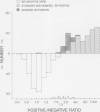Abstract
An enzyme-linked immunosorbent assay was developed to detect bovine serum antibody to infectious bovine rhinotracheitis virus. The specificity of this assay in 304 bovine sera, collected from an infectious bovine rhinotracheitis virus-free herd, was 100%; in sera from 62 cattle inoculated with an intranasal vaccine, its diagnostic sensitivity was 27.4% at one month and 100% at six months, postvaccination. In 303 bovine sera with standard serum neutralizing antibody titers of greater than or equal to 1:2 it showed 100% sensitivity; and in 463 random diagnostic samples, comparative tests indicated that enzyme-linked immunosorbent assay detected more seropositive animals (61.6%) than the standard serum neutralizing test (49.9%). The enzyme-linked immunosorbent assay method was considered to be technically superior as a routine diagnostic test for the detection of infectious bovine rhinotracheitis viral antibody in bovine sera.
Full text
PDF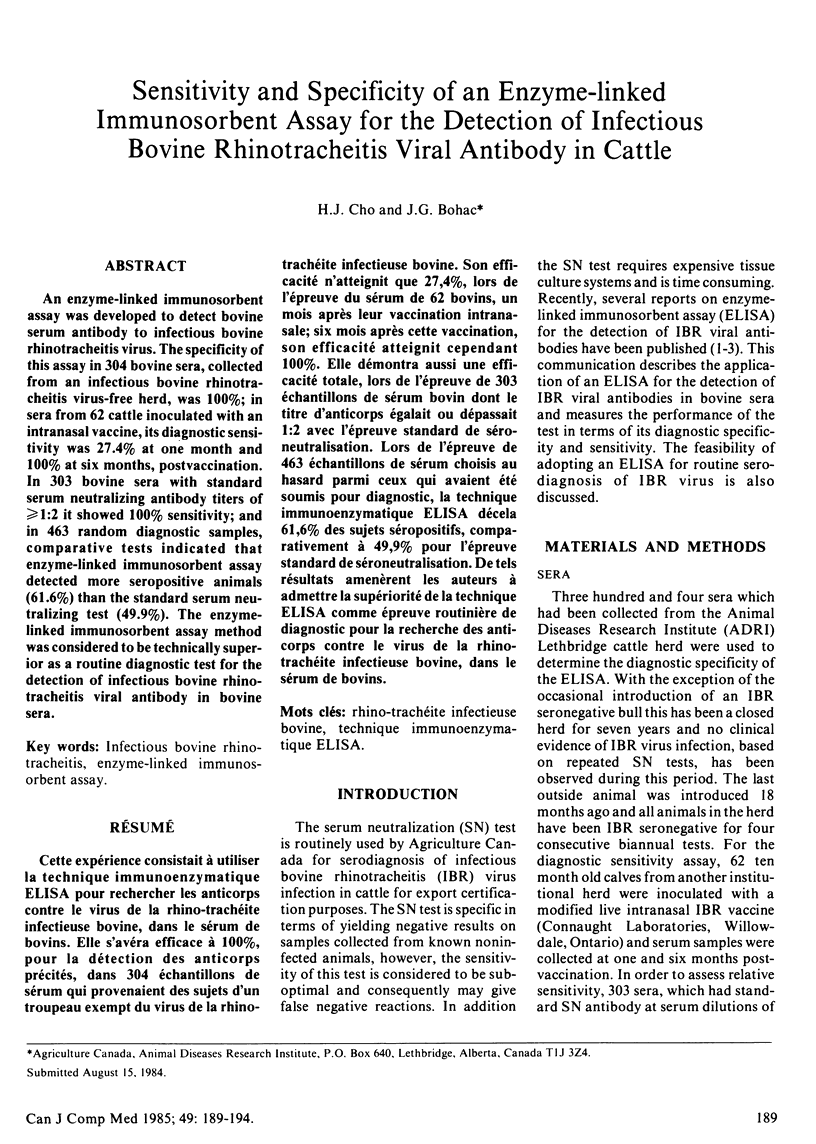
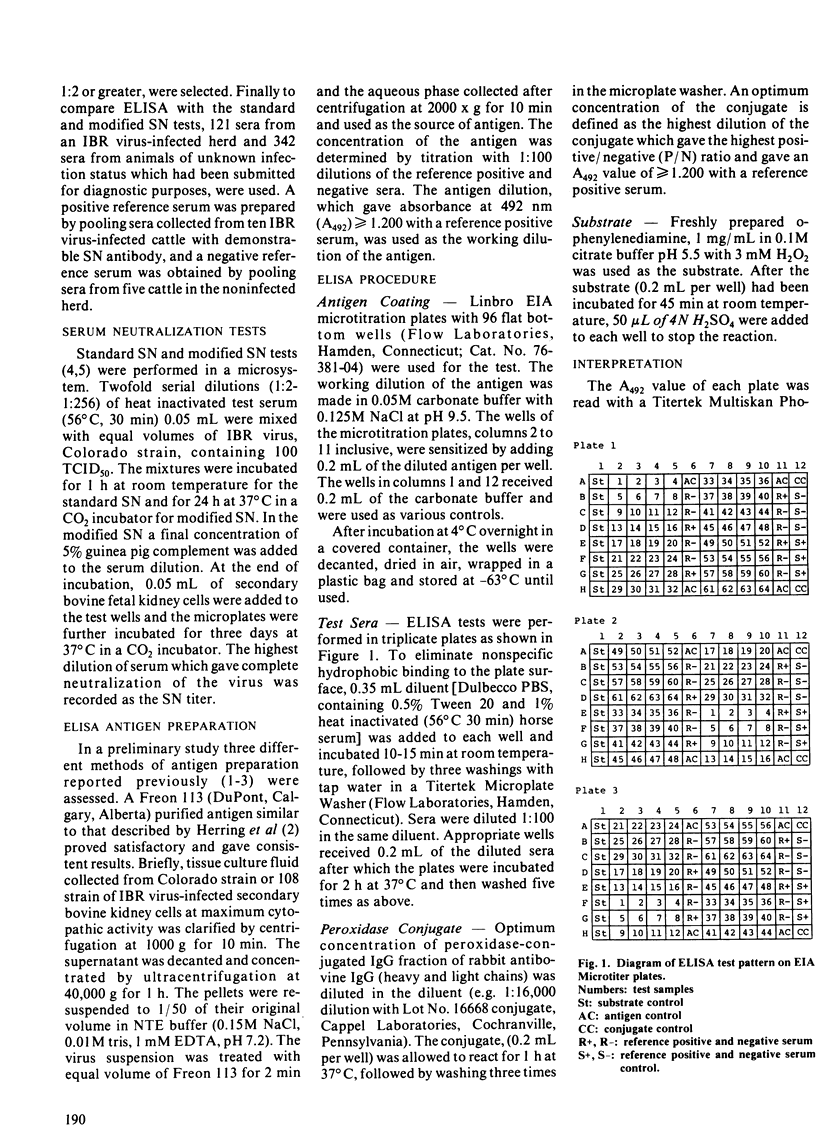
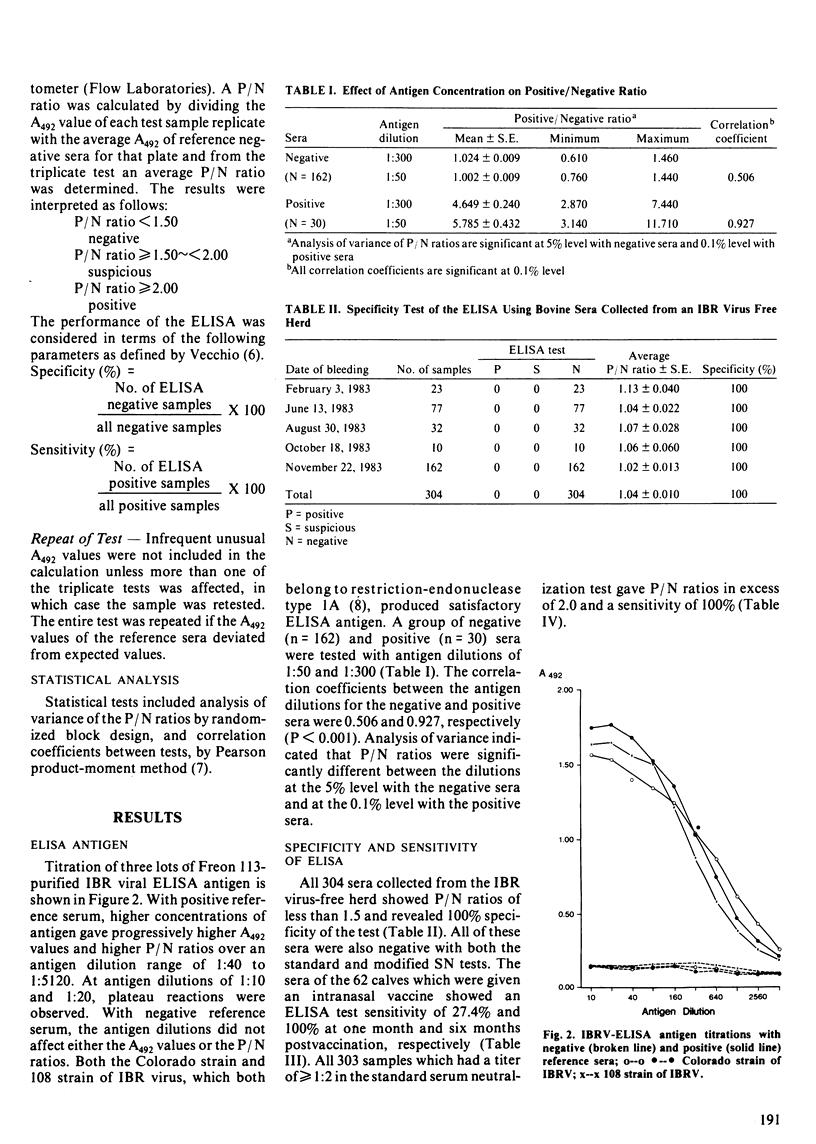
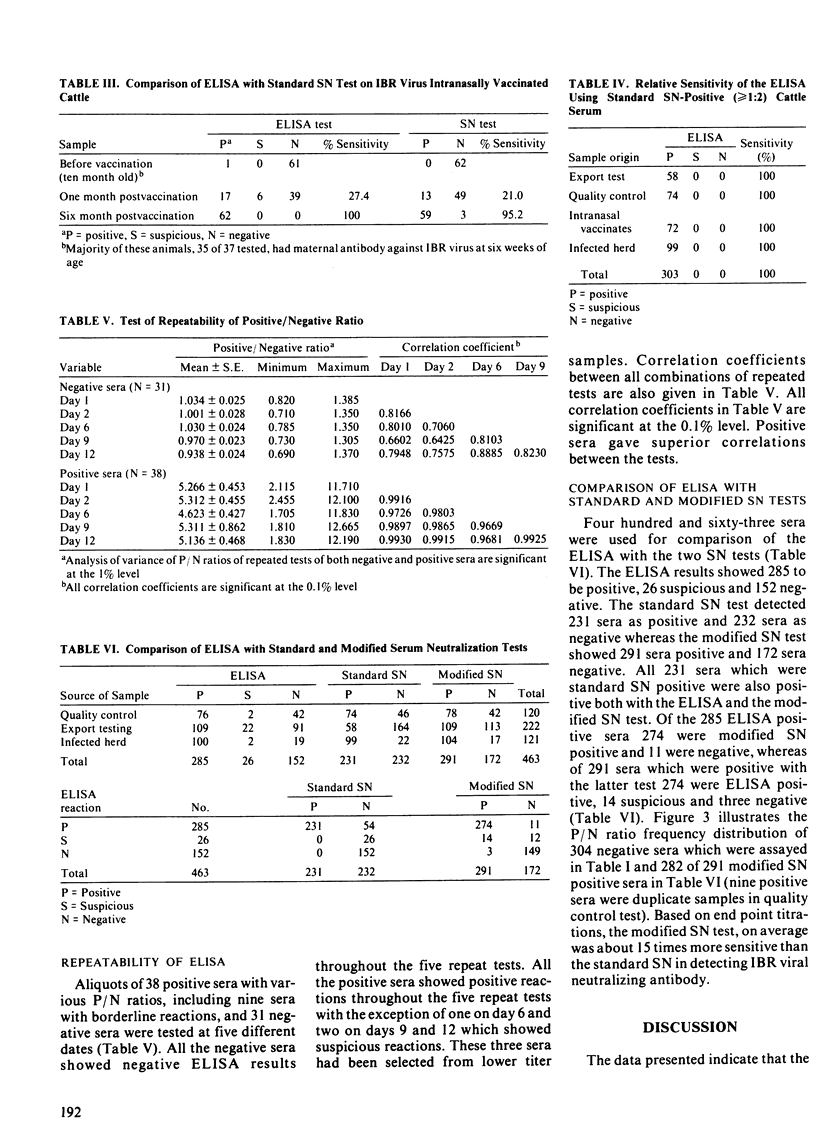
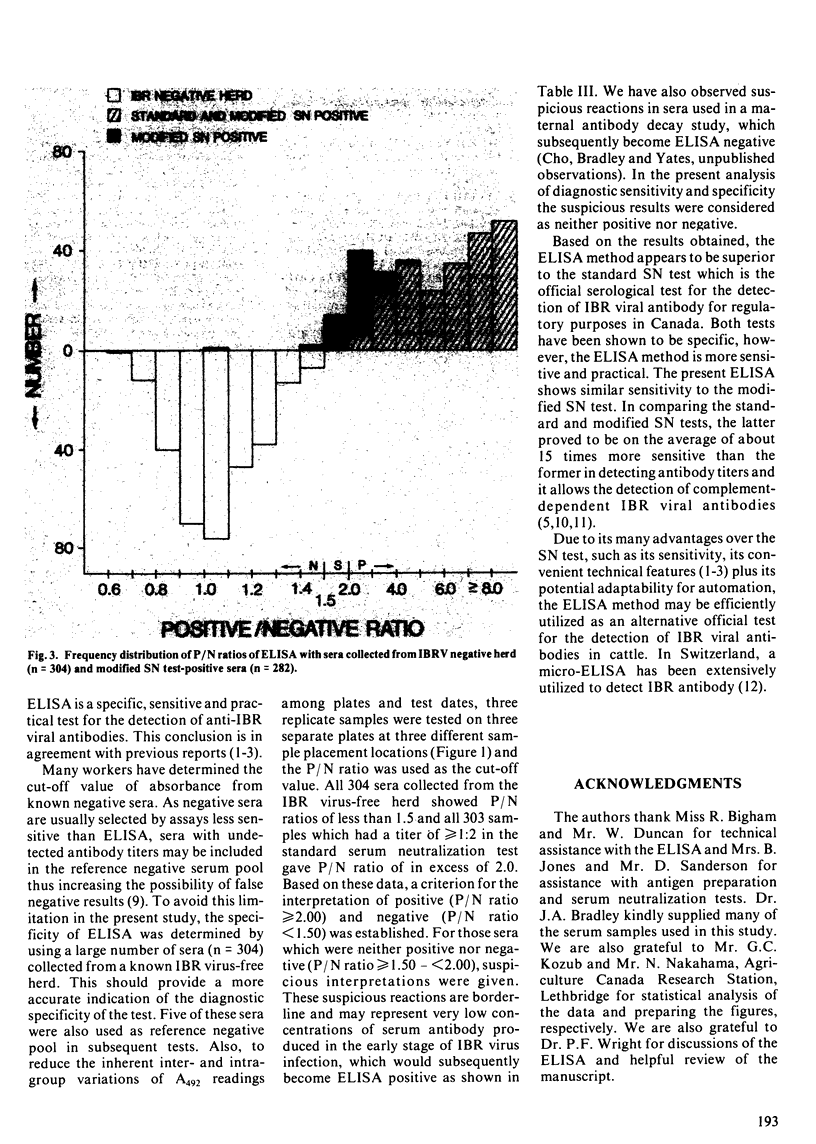
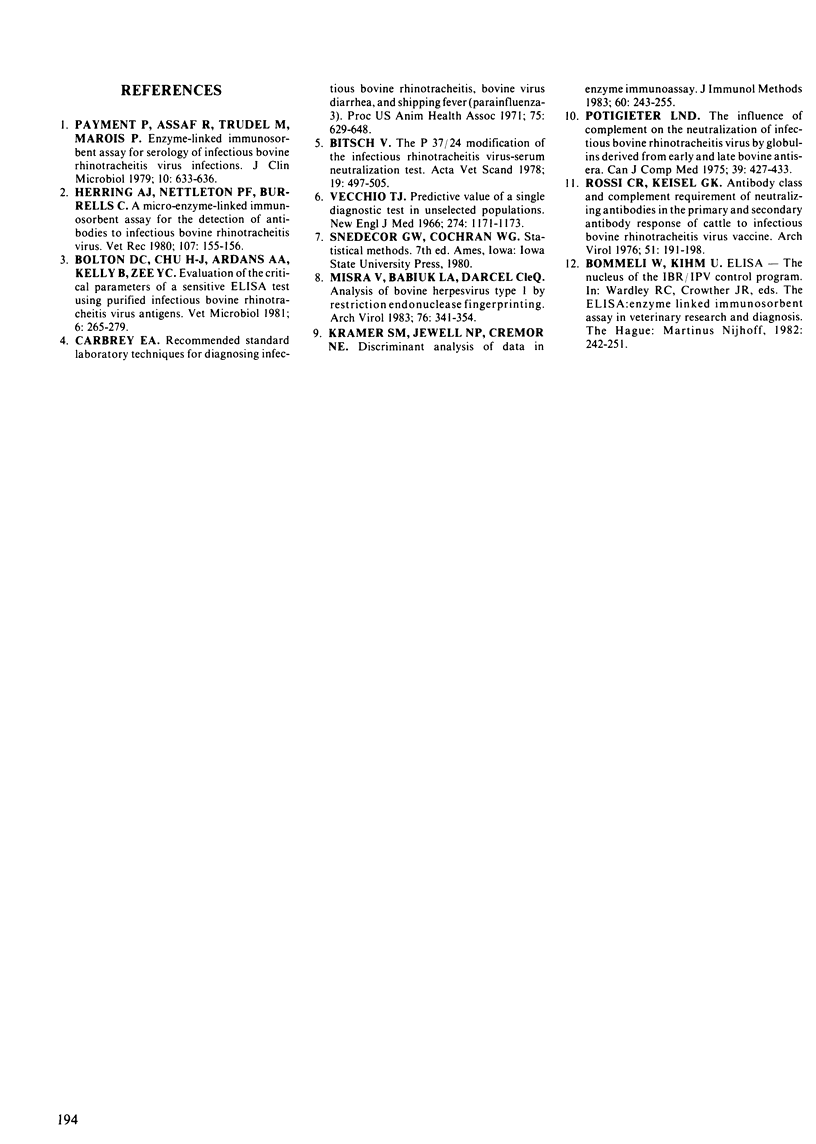
Images in this article
Selected References
These references are in PubMed. This may not be the complete list of references from this article.
- Bitsch V. The P 37/24 modification of the infectious bovine rhinotracheitis virus-serum neutralization test. Acta Vet Scand. 1978;19(4):497–505. doi: 10.1186/BF03547589. [DOI] [PMC free article] [PubMed] [Google Scholar]
- Herring A. J., Nettleton P. F., Burrells C. A micro-enzyme-linked immunosorbent assay for the detection of antibodies to infectious bovine rhinotracheitis virus. Vet Rec. 1980 Aug 16;107(7):155–156. doi: 10.1136/vr.107.7.155. [DOI] [PubMed] [Google Scholar]
- Kramer S. M., Jewell N. P., Cremer N. E. Discriminant analysis of data in enzyme immunoassay. J Immunol Methods. 1983 May 27;60(1-2):243–255. doi: 10.1016/0022-1759(83)90352-6. [DOI] [PubMed] [Google Scholar]
- Misra V., Babiuk L. A., Darcel C. L. Analysis of bovine herpes virus-type 1 isolates by restriction endonuclease fingerprinting. Arch Virol. 1983;76(4):341–354. doi: 10.1007/BF01311201. [DOI] [PubMed] [Google Scholar]
- Payment P., Assaf R., Trudel M., Marois P. Enzyme-linked immunosorbent assay for serology of infectious bovine rhinotracheitis virus infections. J Clin Microbiol. 1979 Nov;10(5):633–636. doi: 10.1128/jcm.10.5.633-636.1979. [DOI] [PMC free article] [PubMed] [Google Scholar]
- Potgieter L. N. The influence of complement on the neutralization of infectious bovine rhinotracheitis virus by globulins derived from early and late bovine antisera. Can J Comp Med. 1975 Oct;39(4):427–433. [PMC free article] [PubMed] [Google Scholar]
- Rossi C. R., Kiesel G. K. Antibody class and complement requirement of neutralizing antibodies in the primary and secondary antibody response of cattle to infectious bovine rhinotracheitis virus vaccine. Arch Virol. 1976;51(3):191–198. doi: 10.1007/BF01318023. [DOI] [PubMed] [Google Scholar]
- Vecchio T. J. Predictive value of a single diagnostic test in unselected populations. N Engl J Med. 1966 May 26;274(21):1171–1173. doi: 10.1056/NEJM196605262742104. [DOI] [PubMed] [Google Scholar]



